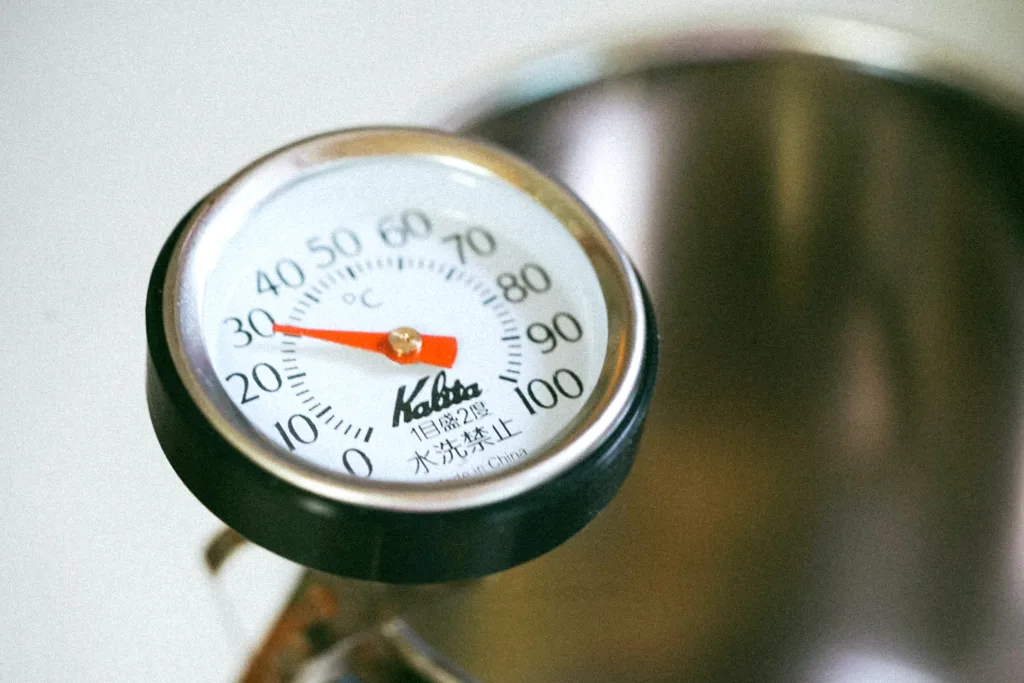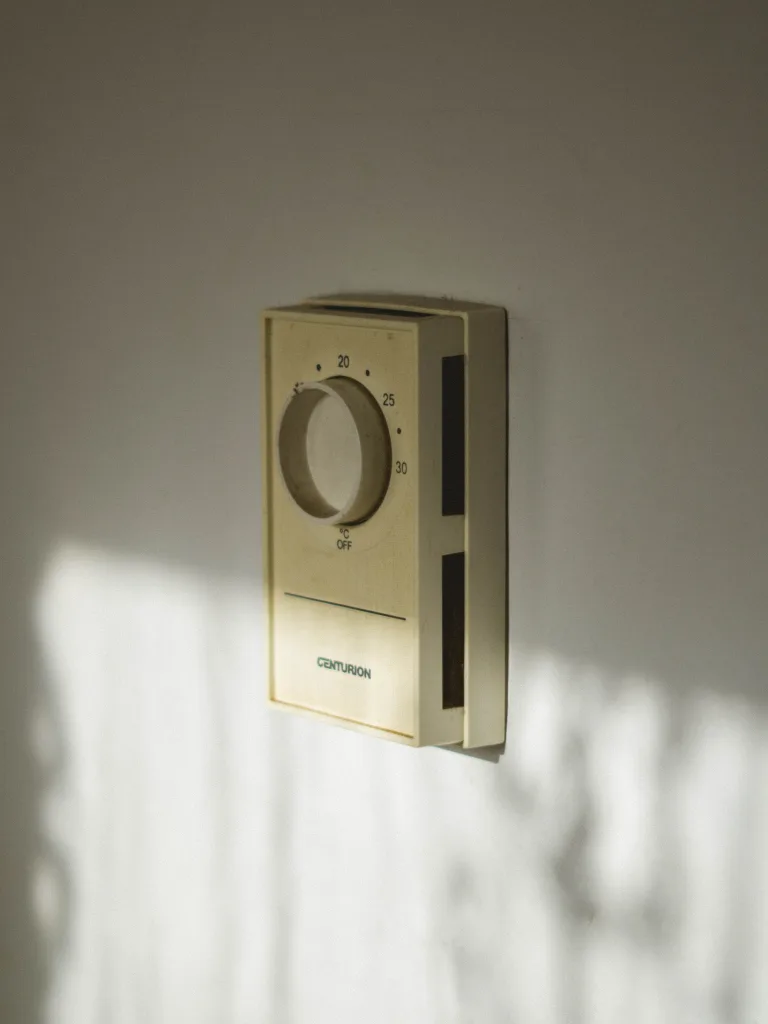A bimetal thermometer is a commonly used tool in various industries, including food service and storage. It is designed to measure temperature accurately, making it an essential instrument for ensuring the safety and quality of food and other materials. However, like any other measuring device, a bimetal thermometer needs to be calibrated regularly to maintain its accuracy.
Calibration is the process of adjusting the thermometer to ensure that it provides correct temperature readings. This is important because an inaccurate thermometer can lead to improper food handling, storage, and cooking, which can pose health risks and affect the overall quality of the final product.
So, when should a bimetal thermometer be calibrated? The answer is simple: before each shift and before the first delivery arrives. By calibrating the thermometer at these key times, you can ensure that it is accurate and reliable throughout the day.
To calibrate a bimetal thermometer, you will need a small wrench or pliers to adjust the calibration nut. The process is relatively straightforward. For a bi-metallic stemmed thermometer, wait until the needle stops moving, indicating that the thermometer has reached a stable temperature. Then, use the wrench to turn the calibration nut until the thermometer reads 212°F or 100°C, depending on the scale you are using.
Next, you need to calibrate the thermometer to the lower end of the temperature scale. Hold the calibration nut securely with a wrench or another tool and rotate the head of the thermometer until it reads 32°F or 0°C. This ensures that the thermometer is accurate at both high and low temperatures, covering the range typically encountered in food service and storage.
It’s important to note that bimetallic analog thermometers may vary in terms of adjustment methods. Some may have a calibration screw instead of a nut, but the principle remains the same. By making these adjustments, you can ensure that your thermometer provides accurate readings, giving you confidence in the temperature measurements you take.
Regularly calibrating your bimetal thermometer is crucial for maintaining food safety and quality. Temperature control is a critical aspect of food handling, and relying on an inaccurate thermometer can lead to improper cooking, storage, and potentially hazardous conditions.
Remember, the accuracy of a bimetal thermometer should be within +/- 2°F or +/- 1°C for food measurements and within +/- 3°F or +/- 1.5°C for air temperature or food storage equipment.
Calibrating your bimetal thermometer regularly is essential for accurate temperature measurements. By following the simple calibration process before each shift and before the first delivery arrives, you can ensure the safety and quality of the food you handle and store. So, make it a habit to calibrate your bimetal thermometer and maintain a safe and efficient food service operation.
When Should A Bimetal Thermometer Be Calibrated?
A bimetal thermometer should be calibrated on a regular basis to ensure accurate temperature readings. It is recommended to calibrate the thermometer before each shift and before the first delivery arrives. This helps in maintaining food safety standards and ensures that the thermometer is accurate to the required tolerance level. Calibrating the thermometer involves comparing its readings to a known accurate reference thermometer and making adjustments if necessary. It is important to note that food thermometers need to be accurate to +/- 2°F or +/- 1°C, while air temperature/food storage equipment should be accurate to +/- 3°F or +/- 1.5°C. Regular calibration helps in providing reliable temperature measurements, reducing the risk of foodborne illnesses, and maintaining proper food storage conditions.

What Should A Bimetallic Stemmed Thermometer Be Calibrated?
A bimetallic stemmed thermometer should be calibrated in order to ensure accurate temperature readings. Calibration is the process of adjusting the thermometer to match a known reference temperature. This is important because over time, thermometers can become inaccurate due to factors such as wear and tear or exposure to extreme temperatures.
To calibrate a bimetallic stemmed thermometer, follow these steps:
1. Wait until the needle on the thermometer comes to a complete stop. This is important because if the needle is still moving, the calibration may not be accurate.
2. Locate the calibration nut on the thermometer. This nut is typically located at the base of the stem, near the dial or display.
3. Use a small wrench or a suitable tool to turn the calibration nut. The direction to turn the nut may vary depending on the thermometer, so refer to the manufacturer’s instructions if necessary.
4. Gradually turn the calibration nut until the thermometer reads a known reference temperature. In the case of a bimetallic thermometer, a common reference temperature is 212°F (100°C), which corresponds to the boiling point of water at sea level.
5. Once the thermometer is reading the desired temperature, ensure that the needle remains steady and does not fluctuate. This indicates that the calibration has been successful.
6. If the thermometer is not reading the desired temperature, make small adjustments to the calibration nut until the correct reading is achieved. Be careful not to over-adjust, as this can lead to inaccuracy in the opposite direction.
Calibrating a bimetallic stemmed thermometer is an important maintenance task that should be performed periodically to ensure accurate temperature measurements. By following these steps, you can ensure that your thermometer provides reliable and precise readings.
What Temperature Should A Thermometer Be Calibrated At?
A thermometer should be calibrated at a specific temperature to ensure accurate readings. The ideal temperature for calibration is 32˚F (0˚C), also known as the freezing point of water. This temperature is commonly used as a reference point for calibrating thermometers because it is easily reproducible and widely recognized.
To calibrate a thermometer, you will need to adjust the reading to match the reference temperature of 32˚F (0˚C). This can be done by manipulating the calibration nut, which is typically located near the base of the thermometer. To begin, securely hold the nut with a wrench or another suitable tool to prevent it from moving. Then, rotate the head or dial of the thermometer until it displays a reading of 32˚F (0˚C). This adjustment aligns the thermometer with the freezing point of water, ensuring accurate temperature measurements.
It is important to note that thermometers should be calibrated regularly to maintain their accuracy. Over time, factors such as wear and tear or exposure to extreme temperatures can cause a thermometer to drift from its calibrated state. By periodically calibrating your thermometer, you can verify its accuracy and make any necessary adjustments to ensure reliable temperature readings.
Calibrating a thermometer at the temperature of 32˚F (0˚C) is essential for accurate temperature measurements. By following the steps outlined above and regularly calibrating your thermometer, you can ensure reliable and precise readings.
How Do You Calibrate A Bimetallic Thermostat?
To calibrate a bimetallic thermostat, follow these steps:
1. Locate the calibration nut: Look for a small nut just beneath the display dial of the thermostat. It is usually positioned in the center or on the side.
2. Gather the necessary tools: Depending on the size of the calibration nut, you may need pliers or a wrench to turn it. Have these tools ready before proceeding.
3. Assess the accuracy: Before making any adjustments, check the current reading on the thermostat and compare it to a reliable temperature source. This will help you determine how much calibration is needed.
4. Begin the calibration process: Use the pliers or wrench to turn the calibration nut in the desired direction. As you turn the nut, observe the changes in the dial reading on the thermostat.
5. Monitor the changes: Keep adjusting the calibration nut gradually until the dial reading matches the temperature of the reliable source you used for comparison. Take your time to ensure accurate calibration.
6. Test the accuracy: After calibrating, wait for some time to allow the thermostat to stabilize. Then, compare the reading on the dial to the known temperature again. If it’s still not accurate, repeat the calibration process.
7. Final adjustments: Once you have achieved the desired accuracy, tighten the calibration nut securely to prevent any unintentional changes in the future.
It’s important to note that bimetallic analog thermometers may slightly lose their calibration over time due to wear and tear. Therefore, it’s recommended to regularly check and recalibrate them if necessary.

Conclusion
Calibrating bimetal thermometers is an essential step in ensuring accurate temperature readings in food and storage equipment. These thermometers should be calibrated before each shift and before the first delivery arrives to maintain precision.
To calibrate a bimetallic stemmed thermometer, it is important to wait until the needle stops moving and then use a small wrench to turn the calibration nut until the thermometer reads 212°F. Similarly, for an accurate air temperature or food storage equipment reading, the thermometer should be adjusted to read 32°F (0°C). This calibration process should be performed regularly to ensure the readings are correct.
To adjust the calibration of a bimetallic analog thermometer, the calibration nut located just beneath the display dial should be turned. It may be necessary to use pliers or a wrench to turn the nut. As the calibration nut is turned, the dial reading will change, and it should be adjusted until it accurately reflects the desired temperature.
By calibrating bimetal thermometers regularly and accurately, food safety can be maintained, and the risk of improper temperature control can be minimized. This not only ensures the quality and freshness of food but also contributes to the overall safety of the food service establishment.
